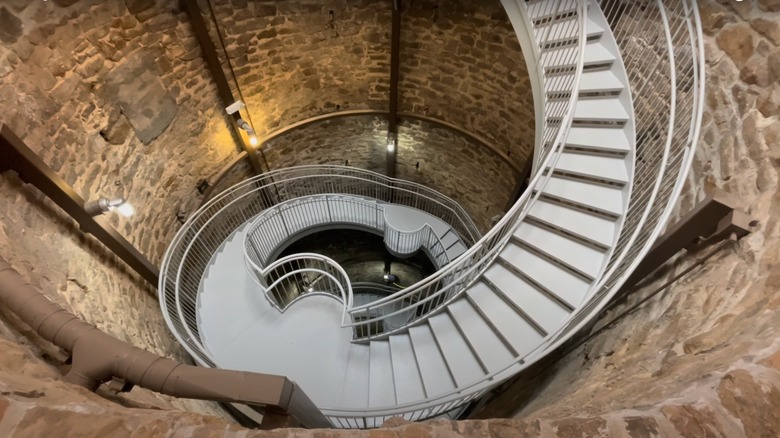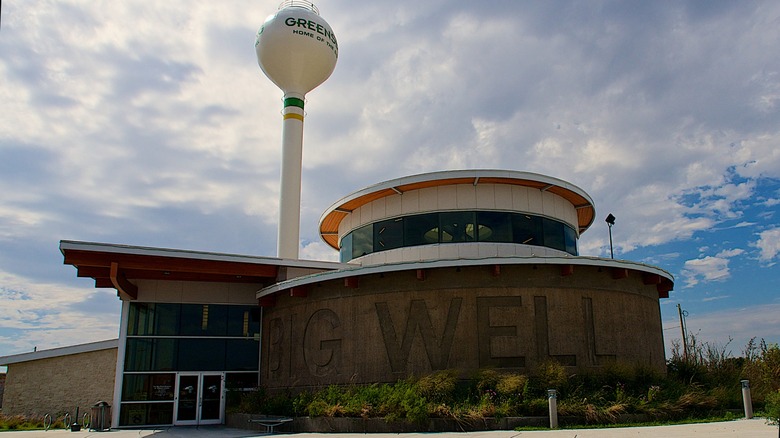One Of Kansas' 8 Wonders Is A Giant Engineering Marvel Of A Well With Deep History
Kansas is home to a number of quirky curiosities and unique roadside stops for your next long drive. It's got the world's largest ball of twine in Cawker City, the world's largest Czech egg in Wilson, and one of the world's largest hand-dug wells in Greensburg. The well is called, appropriately enough, the Big Well. The Kansas Sampler Foundation, a non-profit dedicated to preserving and celebrating Kansas' rural culture, named it one of the 8 Wonders of Kansas in 2008 with tens of thousands of votes coming in from around the country. It was among sites like one of the world's last remaining tallgrass prairies and the Eisenhower Presidential Library.
The Big Well is truly a remarkable feat of engineering. It's 32 feet wide and 109 feet deep. In the late 1880s, teams of up to 30 men at a time, earning 50 cents a day, built the well using shovels, picks, and a pulley. The goal was to get water for the town of Greensburg from the Ogallala Aquifer. It has been billed as the world's largest hand-dug well, but that honor actually goes to the St. Patrick's Well in Italy. It is, however, the largest hand-dug well in the U.S.
When you go to the Big Well, you start in the surface level Museum and Visitor Center, which includes details and displays on how the well was constructed and the history of the area. It's also here that you'll find one of the world's largest pallasite meteorites. The 1,000-pound meteorite was first uncovered in the 1940s at a nearby farm, and it went on display at the Big Well Museum not long after.
Greensburg's Big Well was rebuilt after a catastrophic tornado
Of course, the highlight of a visit to the Big Well Museum and Visitor Information Center in Greensburg is walking down the spiral staircase into the well itself. It's 84 steps down, and the deeper you go, the more amazed you'll be at the work it took to create without machinery.
The Big Well has been a tourist attraction in this tiny town since the late 1930s. Tossing coins down into its depths as a kid is a treasured memory for many Kansans. However, it looks a lot different now than it did when it first opened. The above-ground portion was completely redesigned and rebuilt in the wake of the massive, almost two-mile wide tornado that obliterated 95% of Greensburg on May 4, 2007. The meteorite and the well itself made it through the tornado, though the original museum building was destroyed. The museum reopened in 2012, and it has exhibits on the tornado's devastation and the rebuilding process. With so much of the town basically leveled, the decision was made to build back with a focus on sustainability and clean energy.
After you've been to the Big Well, visit the Kansas Underground Salt Museum in Strataca, another one-of-a-kind site in the Sunflower State. It's in Hutchinson, about a 90-minute drive from Greensburg.

